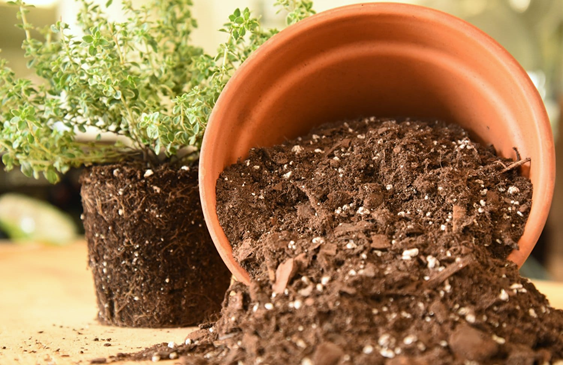Organic Gardening
Organic Potting Mixes
There are several pros and cons of organic potting mixes associated with using organic or sustainable growing methods versus traditional, chemical-based growing techniques. In most cases, organic growing techniques are more environmentally responsible, as they do not use chemically engineered materials that Leach into groundwater or poison drinking water. In some cases, organic or sustainable growing techniques can produce crops that are stronger, healthier and better tasting than those produced with conventionally grown plants and crops. However, it must also be remembered that even though organic growing techniques may be more efficient and healthy, they do have their disadvantages, especially with regards to the use of chemicals. As a result, it is important to do your own research to find out which growing method is right for you, your family and your environment. Here are a few pros and cons of organic potting mixes:
1. Organic vs. Chemical-Based Potting Mixes
In general, organic potting mixes consist of a natural or organic base ingredient, typically sphagnum peat, or sometimes straw as well. These provide a natural physical environment for plant root growth; however, these are relatively passive in terms of chemical activity and nutrient content. They cannot replace the nutrients and minerals essential for plant life to thrive. As a result, they may still require fertilizer, insecticides and other chemicals in order to achieve the same end result. By contrast, chemical-based fertilizers, pesticides, herbicides and other chemicals can significantly increase the productivity of your plants through the addition of specific nutrients, ions and other elements that help to energize the soil.
2. Use of Organic Potting Mixes
The mixing of organic potting mixes provides an extra source of nutrients that will help plants grow. For example, by using perlite, a light, porous clay ingredient, you will provide additional drainage, air, heat and moisture to a potting soil that may have been lacking. You will also be able to control the amount of light and moisture penetrating into the ground as well as the speed of evaporation.
3. Affordable
Organic fertilizers are generally much more affordable than chemical fertilizers. Organic composting requires more work but offers significant benefits. Composting eliminates any harmful chemicals and contaminants that could potentially harm plants, lawns, gardens and ponds. Organic fertilizers do not contain any synthetic additives, stabilizers or preservatives and are free from toxic fumes, land fill waste and other chemicals.
4. Quality of Organic Potting Mixes
Organic Potting Mixes vary greatly in quality. Some brands are highly pure while others use inferior quality ingredients. Pure forms of compost are often highly soluble in water, and this characteristic helps to increase the permeability of the mix. Soluble materials tend to have greater absorption rates and can quickly add nutrients to the soil. Poorly soluble mixes can prevent the absorption of needed nutrients and in the process deplete the potting media’s ability to retain moisture.
5. Aeration
Organic potting mixes also include a process called aeration. Aeration helps to improve the permeability of the mix, therefore allowing more water and air to penetrate. Potting mixes with high aeration rates help to maintain a healthy balance between the physical environment of the plants and chemical environment of the compost. This process increases both the rate and extent of root development and the speed of nutrient evaporation.
6. Additives for Organic Potting Mixes
Potting mix manufacturers often combine their own proprietary blends with other organic ingredients to achieve specific effects. Common additives include potassium, calcium, magnesium, sulfur and nitrogen. Potting mix manufacturers claim that certain combinations of ingredients work best for certain plants, and that the combinations work for all plants in the same way. Many companies also claim that certain combinations of ingredients are best used in conjunction with other nutrients to provide a more complete nutrient package for the plants. Some nutrients that seem to work well together include copper, sulfur, iron, and potassium. It is wise to check with local nursery stores or garden centers to find out which combinations of nutrients have worked well for your potted plants in the past.
7. Conclusion
Organic potting mixes are made with soil that has been aerated and contains nutrients that are conducive to root growth. Potting mix manufacturers often include detailed information on what percentage of organic matter each ingredient in the mix should have. A good mix will have an adequate amount of soluble and insoluble calcium, potassium, magnesium, iron, and sulfur, as well as microorganisms, such as yeast and beneficial organisms. It is also recommended that the mix is rich in manganese, copper, and silica. These trace elements are important for plants to thrive and improve their root systems.

